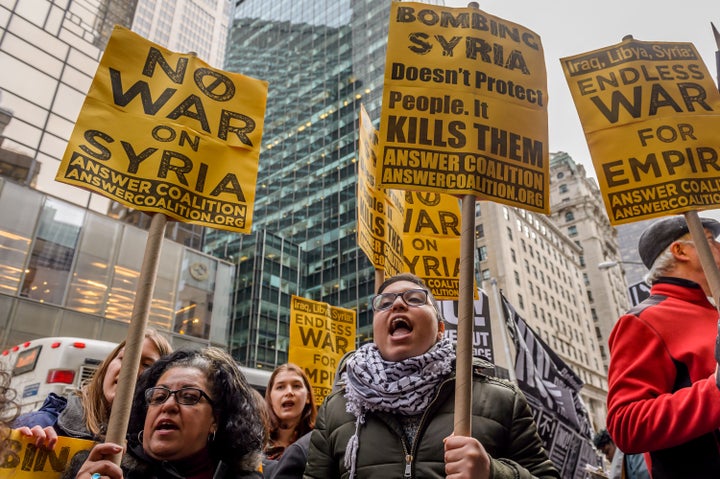
The starting point in any analysis of the recent American attack on Syria’s al-Shayrat airbase is to look to the most basic principles of strategy. At its most basic level, strategy is the task of matching means to ends. The strategist’s job is to identify the objective and then figure out what the proper means are for achieving that objective.
From the start, there has been a lack of clarity or consistency from the administration on the objective of the strike but the main purpose appears to have been to send a message to Syrian President Bashar Assad about the use of chemical weapons. The problem with strikes designed to send a message of toughness is that they usually end up sending a message of weakness because they don’t achieve any concrete military objective
The American strike on Shayrat focused on destroying the base’s air defenses, ammunition stores, and logistical facilities. The strikes appear to have destroyed nine Syrian warplanes but left most of the planes at the base unharmed. The strikes did not target the airfield’s runways. Additionally, because Shayrat has been a major hub for Russian activities in support of the Assad regime, the United States had to warn the Russians to minimize the risk of killing Russian personnel and escalating the conflict. This warning also may have allowed the Syrians to protect some of their critical military assets. All of this lessened the impact of the strike.
“The United States is really telegraphing that it won’t do any of the things that would change the course of the war...”
So a handful of buildings were damaged and some Syrian warplanes were destroyed but the airfield was operational again within 24 hours and Assad’s air force was launching missions from its untouched runway the day after the strike occurred. On Saturday, Syrian warplanes were once again dropping bombs on the same town that was the victim of Assad’s April 7 chemical weapons attack. Assad’s ability to wage war has not been lessened, the rebel forces arrayed against him are in no better position, and the civilian population remains at risk of bombing with the conventional weapons that have done nearly all of the killing in this war. In other words, the strike achieved almost nothing concrete at all.
There were military options that would have posed a serious threat to Assad and would have had a major impact on the regime’s survivability. For example, the United States could have more aggressively targeted Assad’s air force, hitting more bases and destroying more planes, so he could no longer bomb rebel held areas with impunity. It could have tried to impose a no-fly zone to stop barrel bombings of civilians. It could have provided close air support to rebel factions fighting Assad to tip the balance of the war against the regime. It could have created safe zones for civilians to protect populated areas from further regime attacks.
The reason the United States didn’t do these things is simple: All these options carry risks, sometimes huge risks. They carry risks for the American servicemembers who would have to perform more dangerous missions and they carry the risk of escalating the conflict if Russian personnel in the country were inadvertently killed. They also carry the risk of mission creep, where the US mission gradually expands beyond what was originally envisioned and finds itself pulled into strategic quicksand.
Wanting to avoid these risks makes sense but it also exposes the fallacy at the heart of US strategy. If the US is only willing to take action that has extremely low risk then Assad doesn’t really have anything to worry about because any action that would materially change the course of the civil war would entail risk. So the United States is really telegraphing that it won’t do any of the things that would change the course of the war - which also means it won’t do anything Assad would actually have to fear. The United States wants to send the message that Assad has to stop using chemical weapons. The message Assad is receiving is that he is free to continue killing scores of civilians with cluster munitions and barrel bombs and that the United States isn’t willing to take action that would put him in any real danger because it won’t accept the risk of escalation with Russia. This fails strategy 101.
There were other options besides available here that would have been preferable. For example, the United States could have pressured Russia to make good on its 2013 promise to rid Syria of chemical weapons by imposing additional sanctions on Moscow or by threatening to target any future military strikes against suspected chemical weapons facilities rather than at empty airplane hangars. The US could even threaten to target any retaliatory strikes against the regime leadership themselves if Russia doesn’t make good on their earlier promises. There may be Russian personnel at most major Syrian military bases but probably not at the Defense Minister’s summer retreat or Assad’s palaces. If the goal is to stop further use of chemical weapons, this is a more direct way of achieving the goal of preventing the use of chemical weapons than a military strike that fails to even target actual stocks of chemical weapons and imposes no personal cost on Assad.
